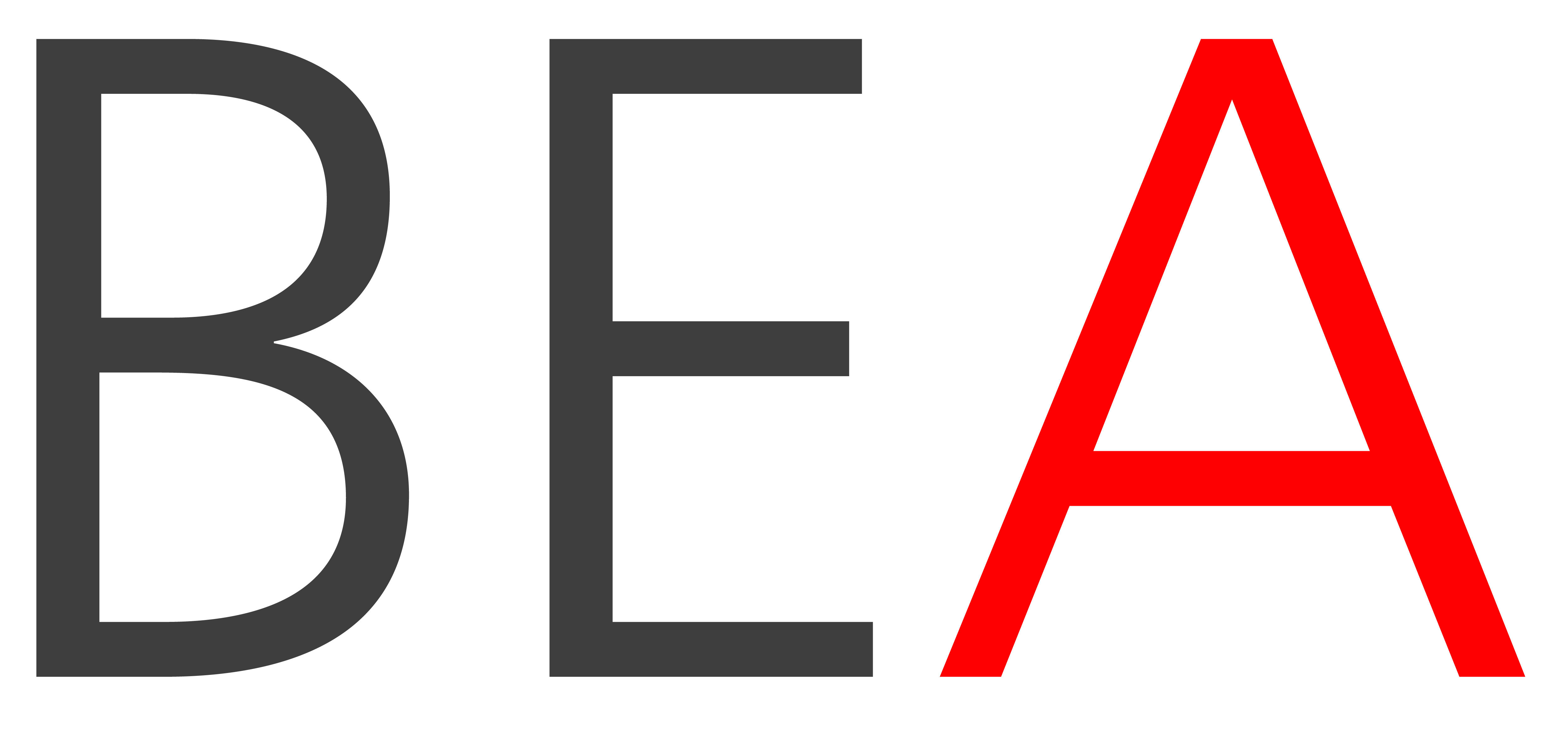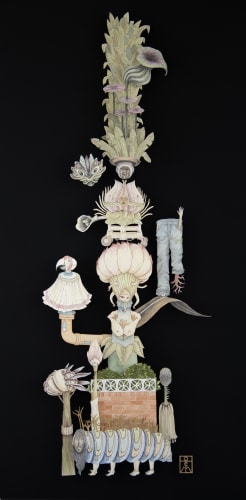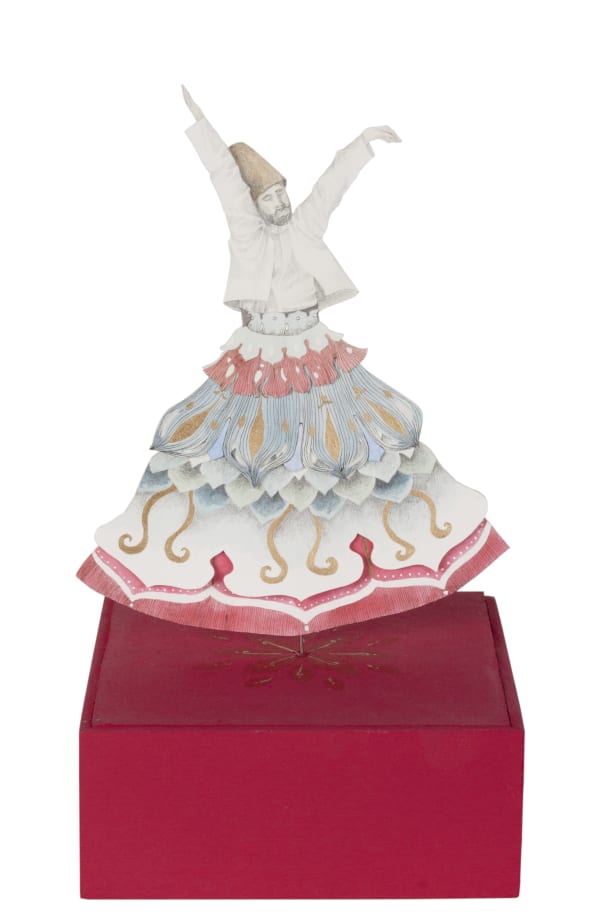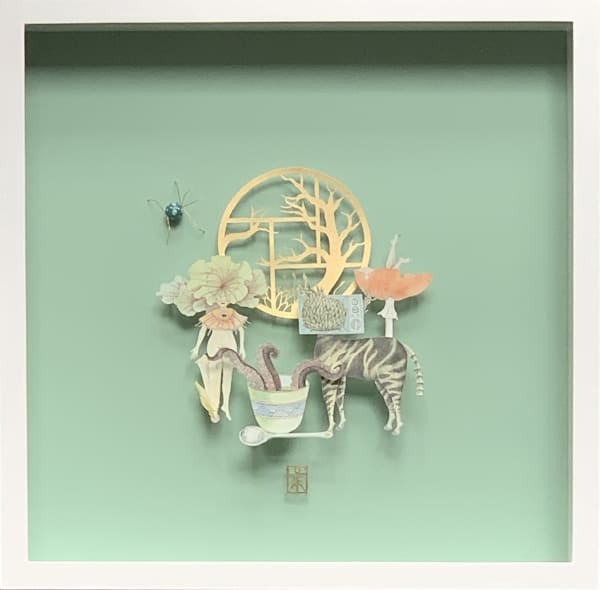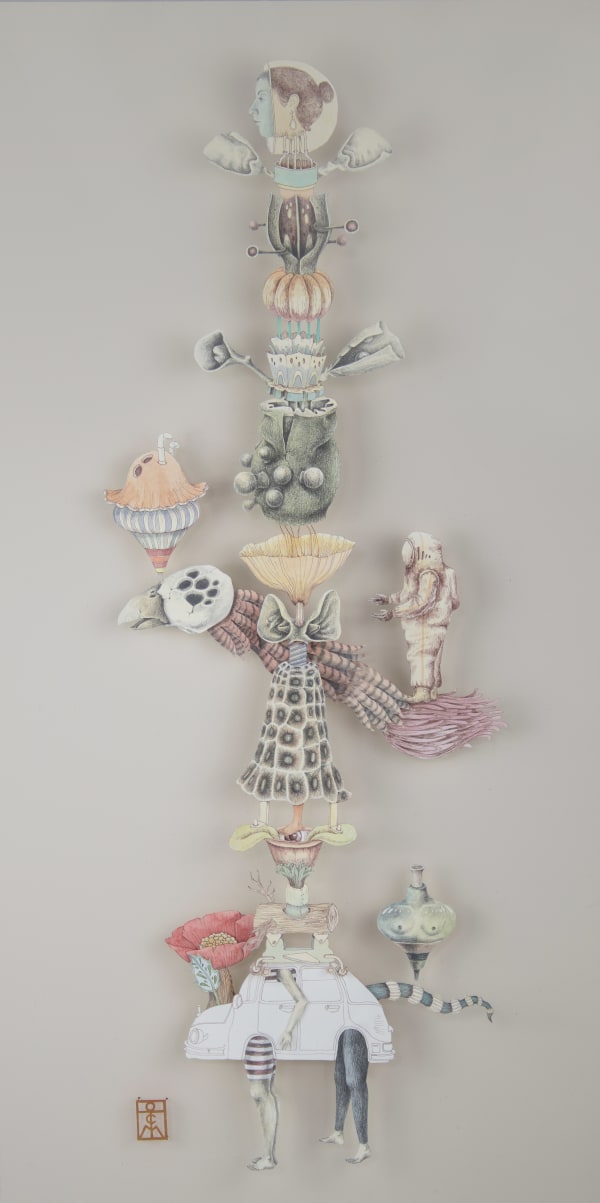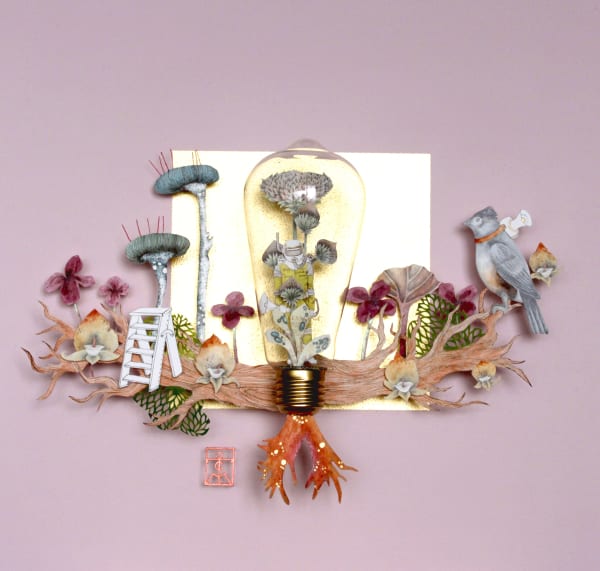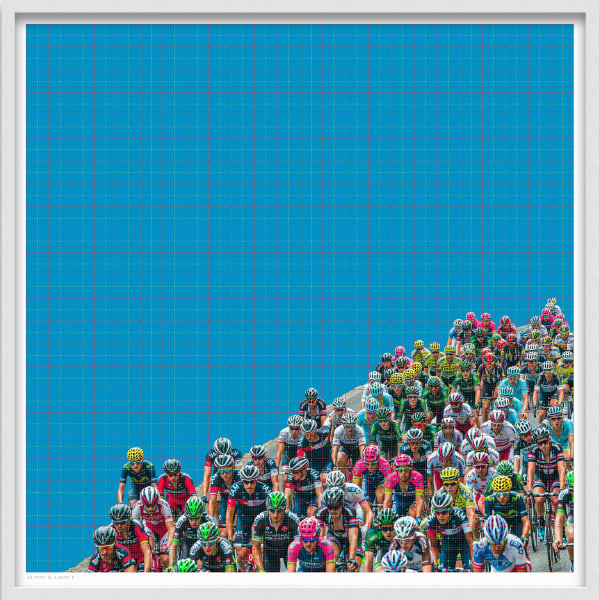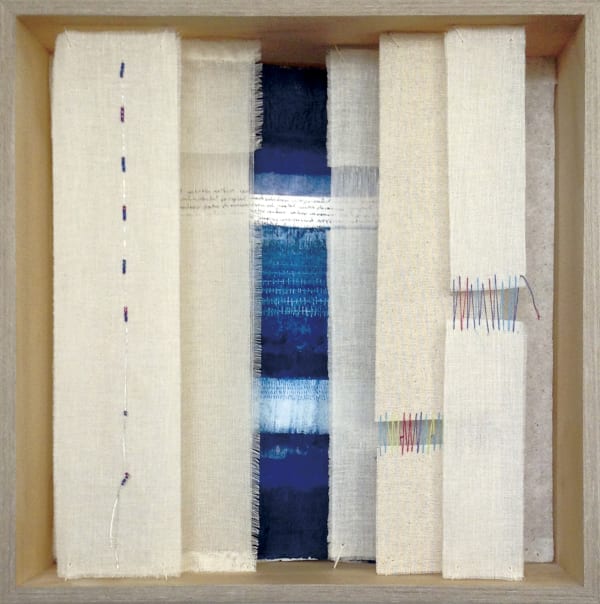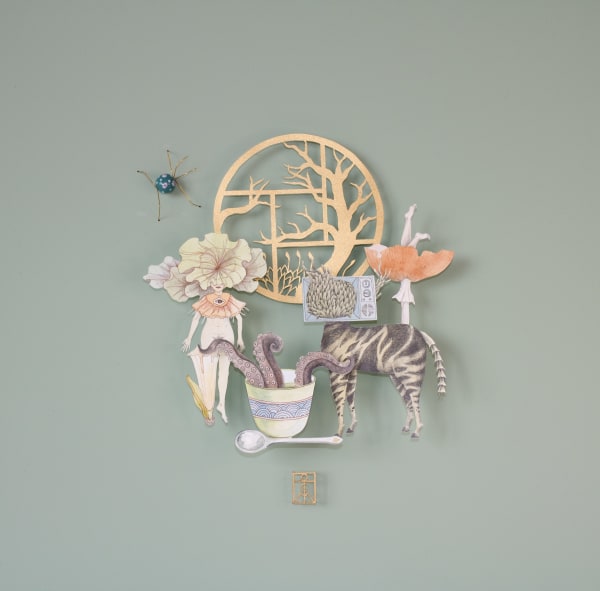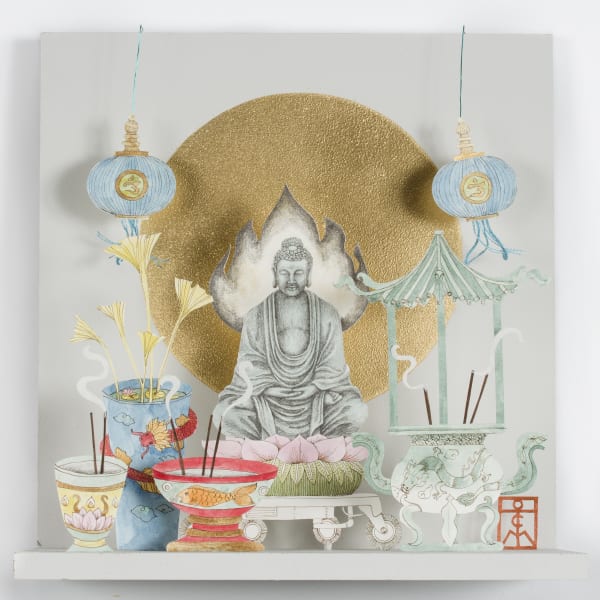If paper is her support, drawing is the medium that allows the embodiment of her fiction, the suggestion of some kind of fable through which she expresses her own reveries.
The Work of Teresa Currea
Eduardo Serrano
For Teresa Currea, paper is what canvas is to painters and, despite its fragility, is also what bronze or stone is to sculptors. It is not just the raw material of her works, but also the productive element of her images; the foundation from which the rest of her fantastic compositions originate. Her work will move you to utopic worlds; worlds of dreams where birds and flowers, mushrooms and astronauts mesh so as to guide the observer to improbable worlds, at the same time enabling one's own imagination to fly.
Her works are generally small in size, but they are hardly related to traditional miniatures in either the materials used or their intention. Far from being decorative, they aim at encouraging ideas or visions in your mind, at interrupting daily thoughts and allowing the viewer to get carried away by the meaning of their own contemplations.
If paper is her support, drawing is the medium that allows the embodiment of her fiction, the suggestion of some kind of fable through which she expresses her own reveries. Through them, she is also able to indirectly touch on some of her artistic values, like her view of aesthetics as a crucial requisite, and of the artist's freedom to follow a path counter to the conventional values - those that have been established, as well as those of vanguard.
Her work is close to surrealism as it establishes the practice of freedom of thought without an apparent intervention of reason, and also because it relies on a form of association in which the unconscious is the tool that generates a significant number of the images. The serendipity of meaning, and even the dreams - as is the case with surrealism - are the source of her works. The use of collage, as well as incongruent objects - also like surrealism -comprise a good part of her images.
Yet, many of Teresa Currea's collages are more like assemblages since the artist cuts out figures to place them in a three-dimensional composition inside acrylic boxes, hence creating scenes that - once the viewer has entered these representations, into the bizarre worlds they represent - become a kind of showcase. Inside them parade primarily the vision of the artist, then those of the viewer. The objects are not selected randomly; the artist meticulously chooses elements belonging to electric network circuits, like light bulbs and switches, possibly creating an allusion to the fact that circuits consistently return to their point of origin.
Some scenes depict plants and animals, especially jellyfish, coral, crustaceans, and even divers who epitomize their fondness for the sea. Also depicted are objects that frequently have little in common with other elements in the scene, but for that very reason convey the idea of coexistence (a principle that is perfectly exemplified by the parasitic mushrooms which scrounge on other beings) and that also serve as a main theme in her work. Human beings also make an appearance, albeit not always whole but frequently half-hidden by some strange rash, by some outgrowth that isn't exactly an animal, nor is it a plant, but rather some other type of fungus or jellyfish that for unknown reasons conceals the human physiognomy. The artist's images however, are not ominous or threatening. On the contrary, they project an aura of innocence and of fairy tales. To this end, the use of pastel colors consistently represents an artistic breath of fresh air during these times of complex and numerous technologies, and so many fateful messages about life on this planet.
-
 Brahma, 2019View more details
Brahma, 2019View more details -
 Chlorophyll Head, 2021View more details
Chlorophyll Head, 2021View more details -
 Dervish, 2019View more details
Dervish, 2019View more details -
 Feminine Power, 2022View more details
Feminine Power, 2022View more details -
 Golden Pond, 2022View more details
Golden Pond, 2022View more details -
 Hinamatsuri, 2021View more details
Hinamatsuri, 2021View more details -
 Koinobori, 2021View more details
Koinobori, 2021View more details -
 Melodious Head from the Savanna, 2023View more details
Melodious Head from the Savanna, 2023View more details -
 Mosque with Flowers, 2019View more details
Mosque with Flowers, 2019View more details -
 Octopus Tea, 2020View more details
Octopus Tea, 2020View more details -
 Self-portrait, 2020View more details
Self-portrait, 2020View more details -
 The Pitcher's Holy Bitter Tears, 2023View more details
The Pitcher's Holy Bitter Tears, 2023View more details -
 The Red Waters, 2023View more details
The Red Waters, 2023View more details -
 Yellow Totem, 2023View more details
Yellow Totem, 2023View more details
-

Surrealist drawings in 3 Dimensions The Work of Teresa Currea
Eduardo Serrano, Art and Museum Magazine, December 15, 2020 -

No se pierda de stand virtual de Beatriz Esguerra en Artbo
Redaccion Cultura, El Nuevo Siglo, October 29, 2020 -

Everyone Is Excited to Learn: Why Dealers From Around the World Love the Dallas Art Fair.
Sarah Cascone, Artnet News, April 7, 2017
-
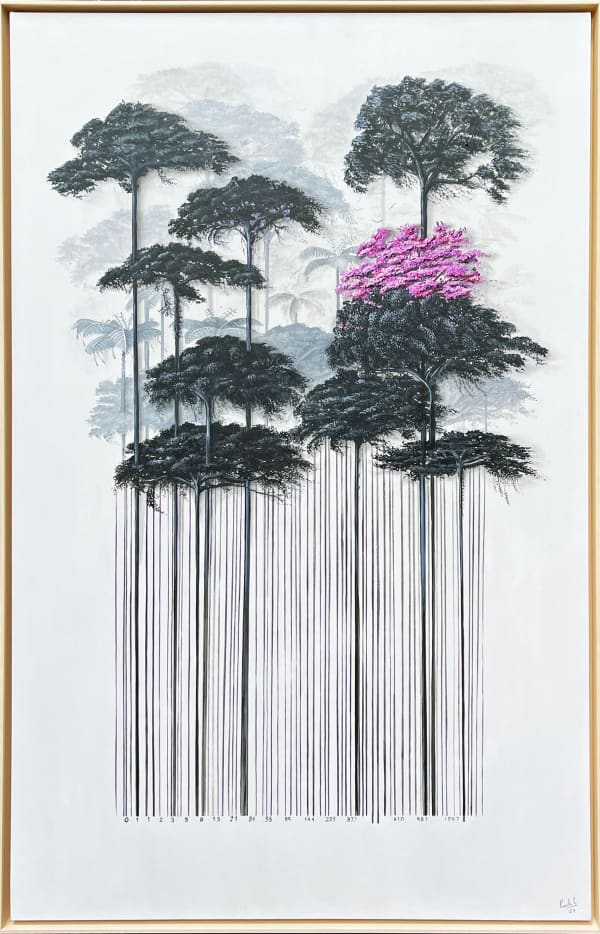
ARTBO 2024
25 - 29 Sep 2024Nature’s Codes Exploring Boundaries, Balance, and Inner Worlds Beatriz Esguerra Art proudly presents at ARTBO 2024 the works of six renowned Colombian artists who explore...Read more -
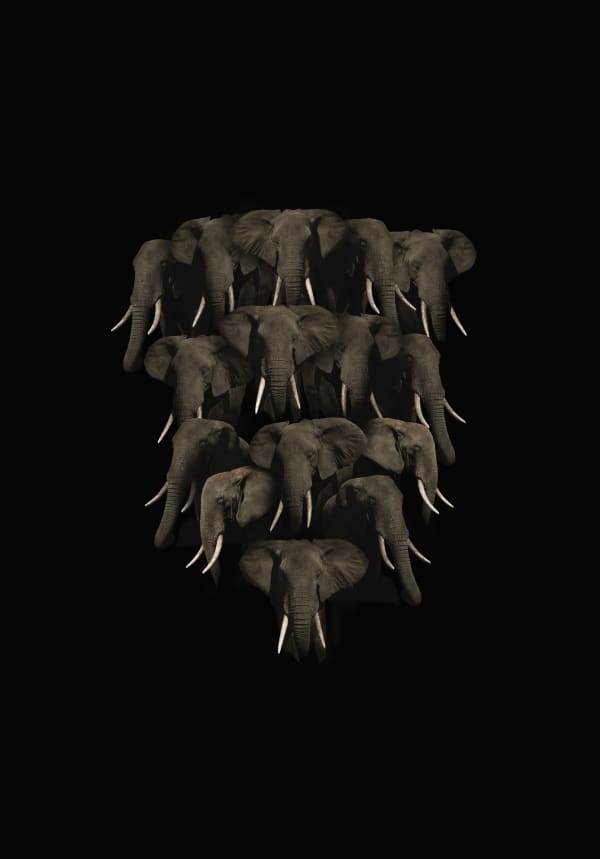
Dallas Art Fair 2024
4 - 8 Apr 2024INTROSPECTIVE LANDSCAPES Colombian artists redefine landscape at the Dallas Art Fair 2024 Discover a world where art transforms the ordinary into the extraordinary. Join us...Read more -

Art Palm Beach 2024
25 - 28 Jan 2024INTROSPECTIVE LANDSCAPES BEA's Colombian Artists Redefine Landscape at Art Palm Beach 2024 Embark on a journey where art transcends the ordinary as Beatriz Esguerra Art...Read more -
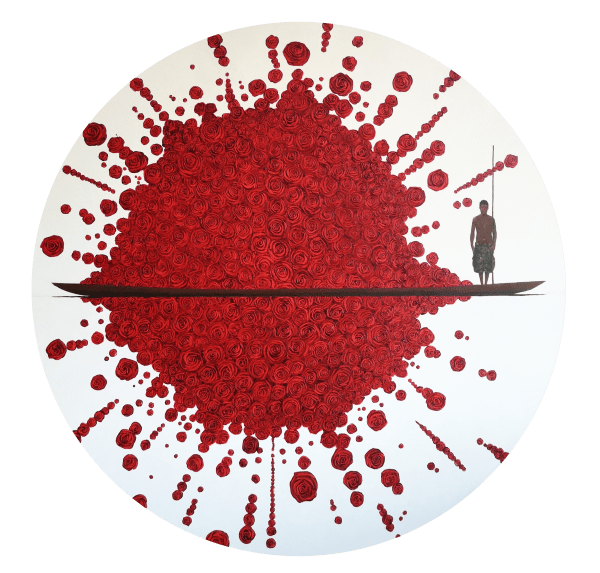
ARTBO 2023
22 - 26 Nov 2023INTROSPECTIVE LANDSCAPES Beatriz Esguerra Art is delighted to present the works of five Colombian artists at ARTBO 2023. These artists, using a figurative visual language,...Read more -
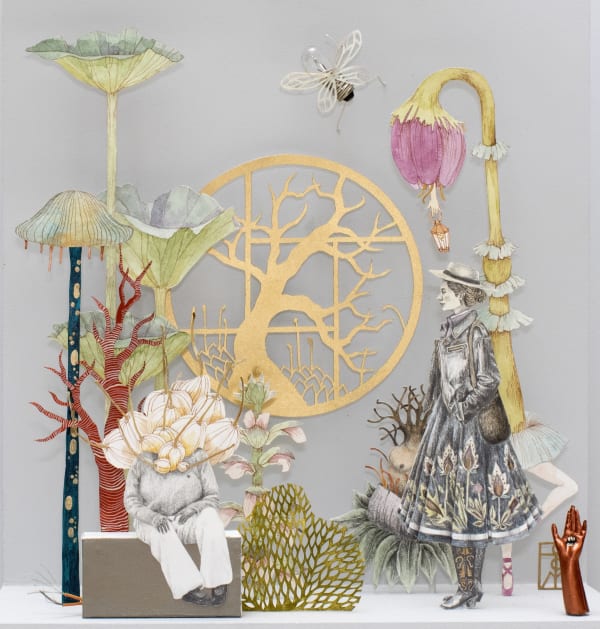
Dallas Art Fair 2023
20 - 23 Apr 2023BEYOND PAPER Colombian artists redefining paper. For decades Colombian artists have been redefining what art on paper is and can be. Next to traditional drawing...Read more -

Los Angeles Art Fair 2023
15 - 19 Feb 2023BEYOND PAPER Colombian artists redefining paper. For decades Colombian artists have been redefining what art on paper is and can be. Next to traditional drawing...Read more -
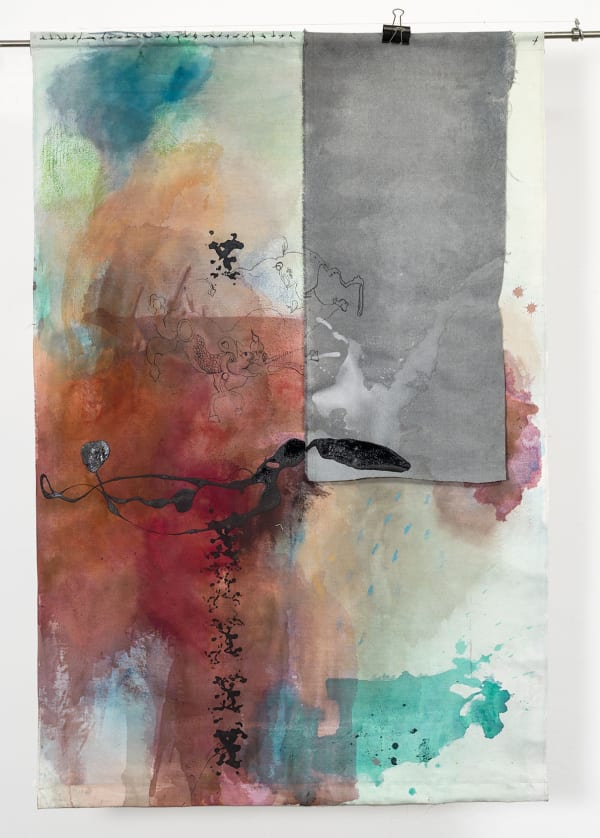
ARTBO 2022
26 - 30 Oct 2022CONVERSATIONS BETWEEN ABSTRACTION AND FIGURATION Beatriz Esguerra Art presents at ARTBO 2022 a conversation between organic abstraction and figuration. Figurative, poetic, and narrative artists Pedro...Read more -
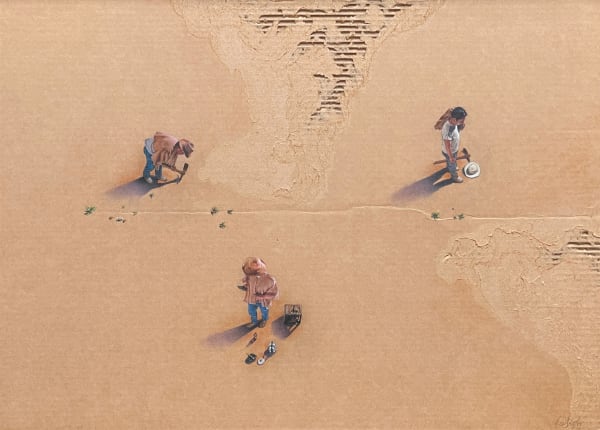
Art on Paper NY 2022
8 - 11 Sep 2022BEYOND PAPER Three Colombian artists redefining drawing Beatriz Esguerra Art at Art on Paper NY For decades Colombian artists have been redefining what drawing is...Read more -

Dallas Art Fair 2022
21 - 24 Apr 2022“Colombian art is one of the world’s best kept secrets.” Colombian art is one of the world’s best kept secrets. Artists with outstanding talent, skill...Read more -

Los Angeles Art Fair 2022
19 - 23 Jan 2022COLOMBIAN PERSPECTIVES Colombian artists redefining paper. Colombian art is one of the world's best kept secrets. Artists with outstanding talent, skill and endless stories to...Read more -
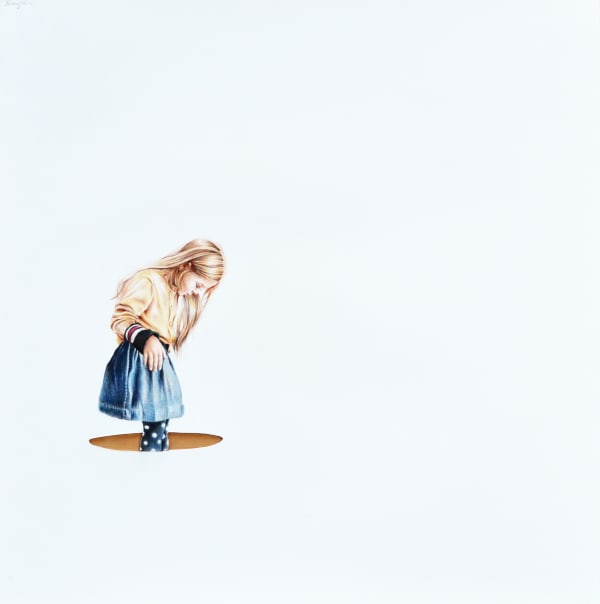
Dallas Art Fair 2021
11 - 14 Nov 2021FIGURE AND SPACE The allure of silent spaces, and figures that interact within them. “Figure and Space” brings together the work of seven Colombian artists...Read more -
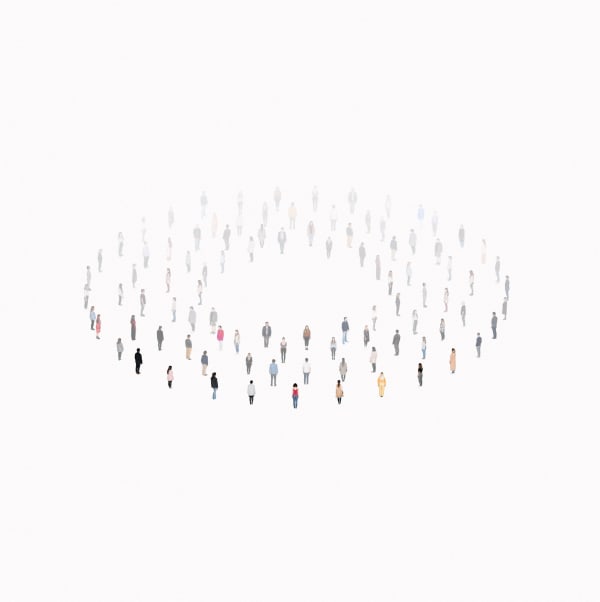
Artbo 2021
Conversations 29 Sep - 3 Oct 2021Take a virtual 3D tour of the exhibition CONVERSATIONS During ARTBO 2021, Beatriz Esguerra Art will present the group show 'Conversations,' an exhibition that brings...Read more -

Art on Paper 2021
"Figure and Space" 9 - 12 Sep 2021The allure of silent spaces, and figures that interact within them. Figure and Space brings together the work of six Colombian artists whose expressions, although...Read more -
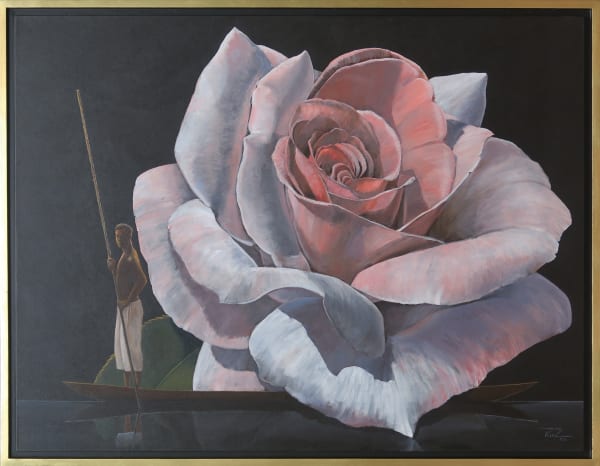
Artbo 2020
27 Oct - 1 Nov 2020ATMOSPHERE AND SPACE Beatriz Esguerra Art presents a selection of works titled 'Atmosphere and Space,' that encompass the gallery's particular style. Atmosphere, space, the human...Read more -

Dallas Art Fair 2020
14 - 23 Apr 2020A fascinating journey through the different expressions of some of Colombia’s best artists. A promoter of Colombia's outstanding artists, Beatriz Esguerra Art offers a journey...Read more -

Artbo 2019
19 - 22 Sep 2019DRAWING & PAINTING Featuring works by Pablo Arrázola, Armando Castro, Teresa Currea, Ismael Rivera, Juan Carlos Rivero-Cintra, and Pedro Ruiz. TAKE A VIRTUAL 3D TOUR...Read more -

Dallas Art Fair 2018
13 - 15 Apr 2018Beatriz Esguerra Art is pleased to announce its presence in Dallas during April, the city's art month, with two exciting exhibitions: one, at our pop-up...Read more
Visit Teresa Currea's most recent exhibition "Kokoro, Intercoastal Visions."
-

ARTBO Fin de Semana
Gallery Group Show 21 - 24 Apr 2022Read more -

Conversations in Small Format
A Small Format Gallery Group Show 9 - 22 Dec 2021CONVERSATIONS A Small Format Gallery Group Show After a year of hardwork and adjustment, we are happy to share that 2021 ends on a high note. To celebrate the end...Read more -

Kokoro
Recent Works By Teresa Currea 21 Aug - 17 Sep 2021KOKORO / HEART Intercoastal Visions After many steps taken, kilometers traveled, climbing and descending mountains and stairs, one realizes that the most important journey is the one taken inside ourselves....Read more -

insignia
Works by Pedro Ruiz, Mario Arroyave, Armando Castro, Teresa Currea, Carolina Convers, Juan Carlos Rivero-Cintra and Pablo Arrazola. 6 - 29 May 2020Insignia is a group show with works that encompass Beatriz Esguerra Art's particular style. One of the characteristics that stands out is an atmospheric feel. All the works featured in...Read more -

New Arrivals
Works by Luis Alejandro Saiz, Carolina Convers, Pablo Arrazola, Mario Arroyave, Teresa Currea, Pedro Ruiz, Danilo Rojas and Ismael Rivera 8 - 28 Feb 2020This new year brings a refreshing wave of artists and works to our gallery. Beatriz Esguerra Art is pleased to present a group show that will open this Saturday, 8th...Read more -

About Paper
A Gallery Group Show 27 Jul - 22 Aug 2019Paper is a multifaceted element, rich in possibilities. This exhibition seeks to explore the role paper plays in works of art, as well as the wide variety that exists within...Read more -

Altars and Devotions
Works by Teresa Currea 16 Mar - 6 Apr 2019It is the first time Teresa Currea adresses the theme of her most recent exhibition 'Altars and Devotions'. In it, the artist refers to the aesthetic experience of visiting sacred...Read more
